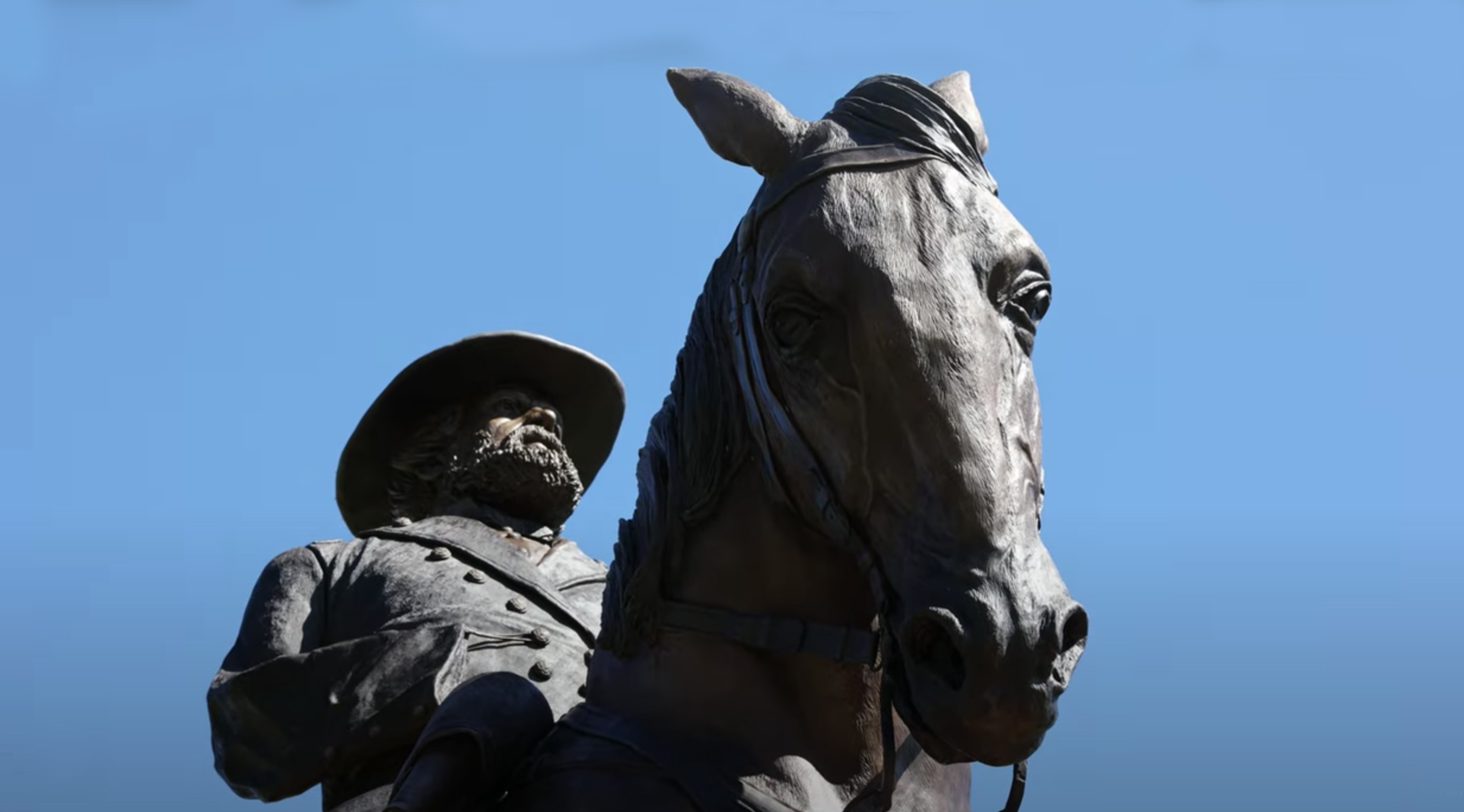LMU dedicates statue to Howard
Published 5:30 am Friday, October 27, 2023

- Gen. Oliver Howard was a career soldier and played a key role in Civil War battles in Tennessee. LMU photo
|
Getting your Trinity Audio player ready...
|
NEWS RELEASE
The Lincoln Memorial University Board of Trustees dedicated a bronze statue honoring Gen. Oliver Otis Howard in Alumni Park on the LMU Main Campus in Harrogate, during its annual Homecoming celebration.
“It is very fitting to have a remembrance of General Howard on this campus. Without his support, this institution would never exist,” LMU Chairman Autry O.V. “Pete” DeBusk said. “Reverend A.A. Myers got everything started with the Harrow Academy, but Howard really took this to the next level. In recalling his conversation with President Lincoln not only did he give us an identity, but a strong sense of mission and a legacy to honor.”
DeBusk and the board commissioned the Fine Art Studio of Rotblatt Amrany to create a tribute to Howard based on another statue honoring the Civil War General, which stands in Gettysburg National Military Park. Artist Oscar Leon and Studio Founder Omri Amrany visited Gettysburg, documenting the piece which was erected in 1932. Comparing it to historic photographs of Howard, they found that the Gettysburg statue was slightly out of proportion. Howard appears taller in photographs than he is depicted on horseback in the 1932 statue.
“What this artist has created here by details is by far much more refined. With a little bit of changes from the Gettysburg statue we drew inspiration from, it’s the same story of General Oliver Otis Howard, but better,” Amrany said. “What we have found as a group of artists, we’ve been called on again and again is to create the future history of the country. This is one good example of this.”
Howard, a native of Maine, was a career soldier serving in the Union Army during the Civil War and later assigned a tour of duty in the West. He was wounded at the battle of Fair Oaks, resulting in the amputation of his right arm. After a short recovery period, he returned to his post and was promoted to major general. He played a significant role at the Battle of Gettysburg and was sent by President Abraham Lincoln to join the fight in Tennessee. Howard performed well while leading the 11th Corps in the Battle of Chattanooga, an engagement which opened the way for future operations against Atlanta.
At the end of the war. Howard was chosen to head the Bureau of Refugees, Freedmen and Abandoned Lands, more popularly known as the Freedmen’s Bureau. He promoted African American education on all levels and eventually played a key role in the founding of Howard University. The institution was created by a group of congregational church members to train African American ministers. Howard found land for the campus within the boundaries of the District of Columbia, used Bureau money to help pay for the land and sustained the college financially for many years. For his efforts, the school was named for him.
In 1894, at the age of 64, Howard retired from the Army following 44 years of continuous military service. Following his military career, he traveled the country as an acclaimed speaker. On one of his trips, in 1896, he returned to Tennessee and made a stop in the Cumberland Gap area. There he met with Reverend A.A. Myers who had founded the Harrow Academy for underprivileged mountain families. Howard agreed to help raise money for the school if Myers would expand its scope to include higher education. A year later, LMU was founded as a living memorial to President Abraham Lincoln. Howard remained dedicated and involved with LMU through the end of his life in 1909.
In addition to dedicating the Howard statue, LMU unveiled a newly commissioned portrait of Howard which was added to the Abraham Lincoln Library and Museum’s Civil War collection. Artist Tom Bluemlein painted the portrait depicting Howard during the Civil War. The portrait project was coordinated by Tim Matthews, LMU trustee and president and chief executive officer of Jewelry Television.
“I was reminded as I was thinking about Oliver Otis Howard that one of his nicknames was the Christian Soldier. It reminded me of an old Christian hymn called ‘Onward Christian Soldiers,’” Matthews said. “I thought about that word onward. I thought about how this so exemplifies the vision of the Board of Trustees and Pete DeBusk in moving LMU onward into the future.”
Also added the ALLM collection during Homecoming was a bronze bas relief entitled “The Preservation of the Union” by Julie Rotblatt Amrany. The piece, while originally created for the Abraham Lincoln Presidential Library and Museum, this piece was cast specifically as a gift to LMU from Omri and Julie Rotblatt Amrany.
Abraham Lincoln and “the Preservation of the Union” is presented as an historical panorama from the founding of the nation through the Civil War, culminating in Lincoln’s eloquent vision of the future. The design and stylistic mark of the 21st century sculptors are unmistakable. The work is a montage with imagery moving in an evolution of metamorphosis. Artistic, technical, and word imagery combine factually and emotionally in presenting the great theme of “to Preserve the Union.”






